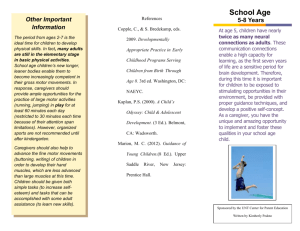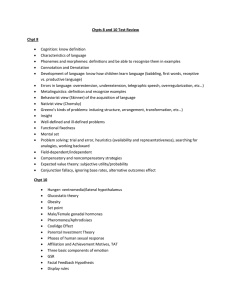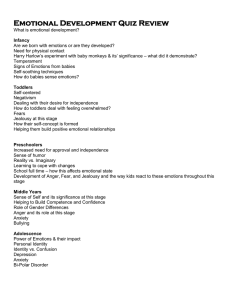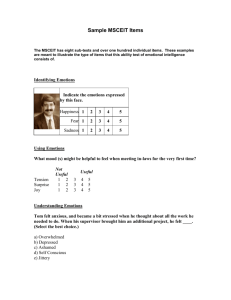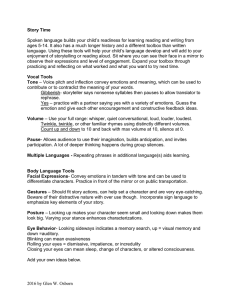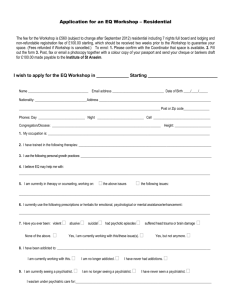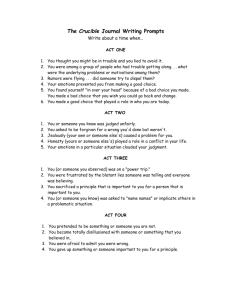Key Points - Delmar Cengage Learning
advertisement
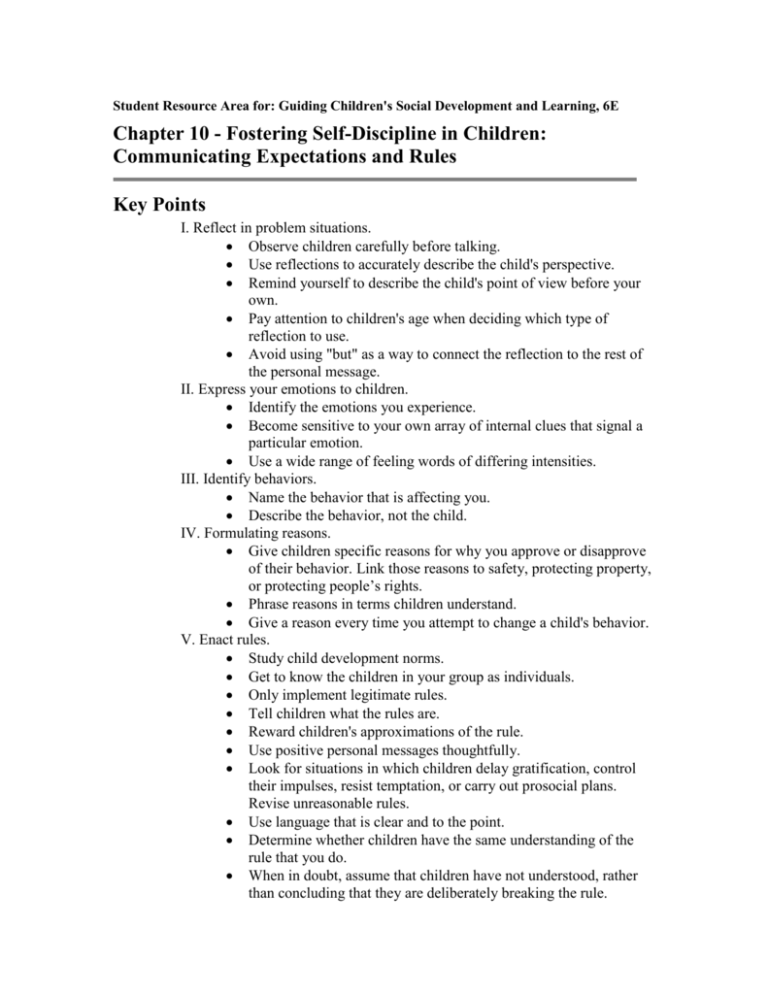
Student Resource Area for: Guiding Children's Social Development and Learning, 6E Chapter 10 - Fostering Self-Discipline in Children: Communicating Expectations and Rules Key Points I. Reflect in problem situations. Observe children carefully before talking. Use reflections to accurately describe the child's perspective. Remind yourself to describe the child's point of view before your own. Pay attention to children's age when deciding which type of reflection to use. Avoid using "but" as a way to connect the reflection to the rest of the personal message. II. Express your emotions to children. Identify the emotions you experience. Become sensitive to your own array of internal clues that signal a particular emotion. Use a wide range of feeling words of differing intensities. III. Identify behaviors. Name the behavior that is affecting you. Describe the behavior, not the child. IV. Formulating reasons. Give children specific reasons for why you approve or disapprove of their behavior. Link those reasons to safety, protecting property, or protecting people’s rights. Phrase reasons in terms children understand. Give a reason every time you attempt to change a child's behavior. V. Enact rules. Study child development norms. Get to know the children in your group as individuals. Only implement legitimate rules. Tell children what the rules are. Reward children's approximations of the rule. Use positive personal messages thoughtfully. Look for situations in which children delay gratification, control their impulses, resist temptation, or carry out prosocial plans. Revise unreasonable rules. Use language that is clear and to the point. Determine whether children have the same understanding of the rule that you do. When in doubt, assume that children have not understood, rather than concluding that they are deliberately breaking the rule. Practice thinking about what you want children to do as well as what you wish they would refrain from doing. Catch yourself saying "No" or "Stop." Tell younger and less experienced children what the alternatives are. Let older or more experienced children generate alternatives for themselves. Talk and act simultaneously. Ask children to help make the rules. VI. Communicate with families. Become familiar with overall program rules related to child and family participation. Find out what expectations families have for their children's behavior. Communicate your discipline approach to families. When talking to family members whose discipline style differs from the authoritative one you are learning, emphasize similarities rather than concentrating on the differences in philosophy. VII. Avoid common pitfalls. Talking in paragraphs. Failing to use the personal message for fear of making a mistake. Talking about personal feelings only in problem situations. Giving up midway. Focusing on short-term rather than long-term goals. Making expectations known from a distance. Waiting too long to express emotions. Disguising expectations.


